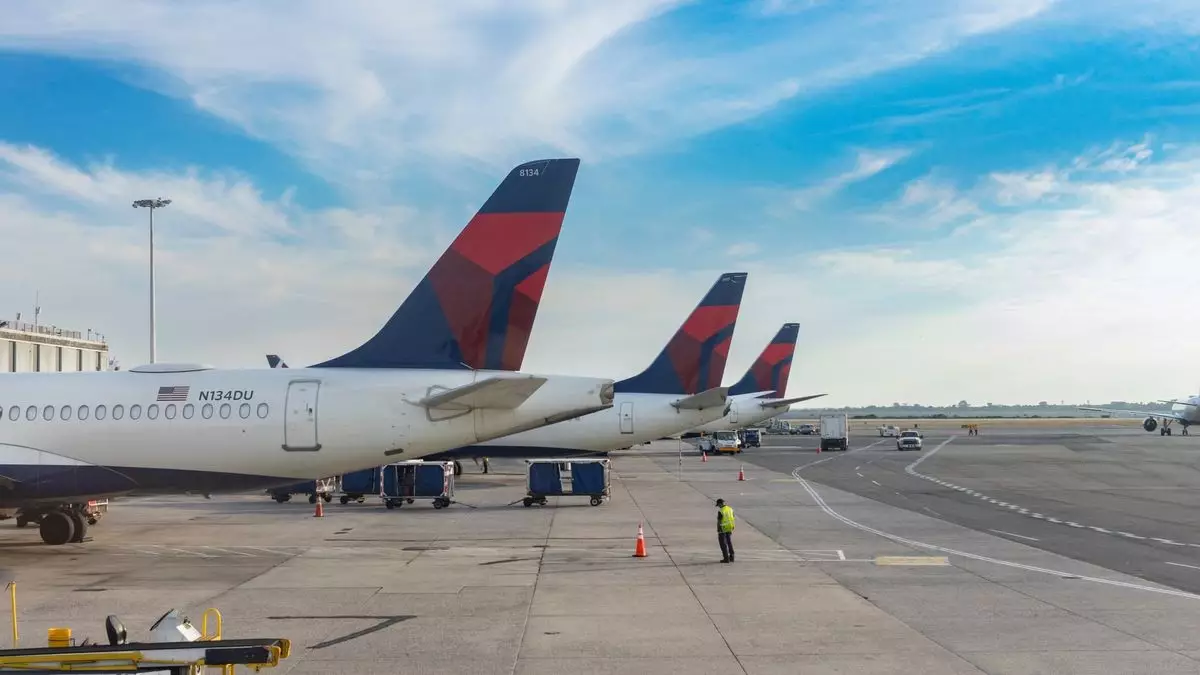Delta Air Lines has recently unveiled its financial results for the third quarter, revealing a significant setback characterized by a shocking 30% drop in operating income. This downturn can primarily be attributed to two main factors: an oversaturated industry landscape and a severe operational disruption that the airline experienced in July. The consequences of these challenges weighed heavily on Delta’s bottom line, as exemplified by its operating income shrinking to $1.4 billion from $1.98 billion in the same period last year. However, amidst these difficulties, Delta’s leadership retains a sense of optimism for the upcoming quarter, highlighting early signs of a more favorable industry balance.
Specifically, Delta’s operational meltdown—largely triggered by a technical failure associated with CrowdStrike—culminated in the cancellation of approximately 7,000 flights over a tumultuous five-day period. This catastrophic event not only marred Delta’s operational reputation but also translated into a substantial financial burden, with estimates indicating a negative impact of about $500 million on net operational income. Furthermore, the airline’s operating margin suffered a decline of 2.3 percentage points, reflecting the compounded effects of operational inefficiencies and increased operational expenses.
On the revenue front, Delta’s operational revenue saw a slight uptick of 1% to reach $15.7 billion, supported by a 4% increase in capacity. However, this positive momentum was quickly overshadowed by a larger 6% rise in expenses. The deteriorating revenue per mile—a key metric for airline profitability—bore the brunt of industry overcapacity, contributing to a disheartening 3% decline for the average passenger flown. Consequently, Delta’s operating margin fell to 8.9%, down from 12.8% the previous year, underscoring the challenges the airline faced in maintaining profitability amidst rising costs and competitive pressures.
Looking Ahead: Optimism for Q4
Despite the disconcerting performance in Q3, Delta is poised to rebound in the fourth quarter. Projections indicate an operating margin ranging from 11% to 13%, which would mark an uplift from 9.3% recorded in the same quarter last year. This anticipated recovery hinges on a gradual reduction in overall industry capacity that is expected to lead to increased airfares. According to consumer price analysis, ticket prices across the industry have already begun to rise, with a reported 1.6% year-over-year increase in September.
In recent months, the landscape of the airline industry has dramatically shifted; after a notable 5.8% increase in capacity in July, airlines, particularly low-cost carriers, have adjusted their schedules to align better with demand. By September, the growth in capacity had slowed down significantly to just 1.2%. Delta, in a calculated response to these changes, plans to expand its fourth-quarter capacity by an estimated 3% to 4%.
While Delta Air Lines faced undeniable hurdles in the third quarter, the strategic adaptations and expectations for improved industry conditions may pave the way for a brighter financial outlook in the near future. The airline’s ability to navigate these turbulent times will be critical in reclaiming its position within the competitive aviation market.

